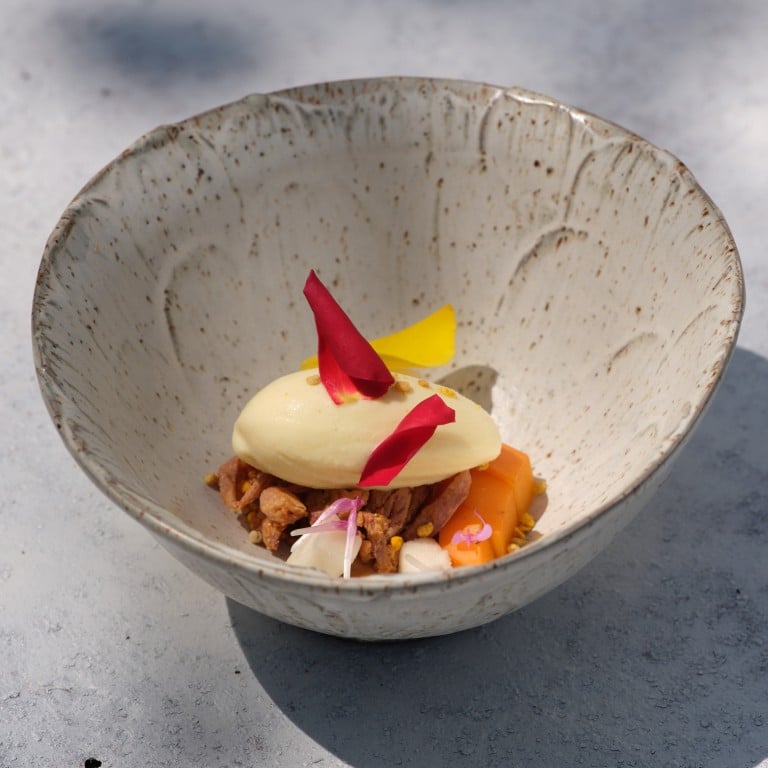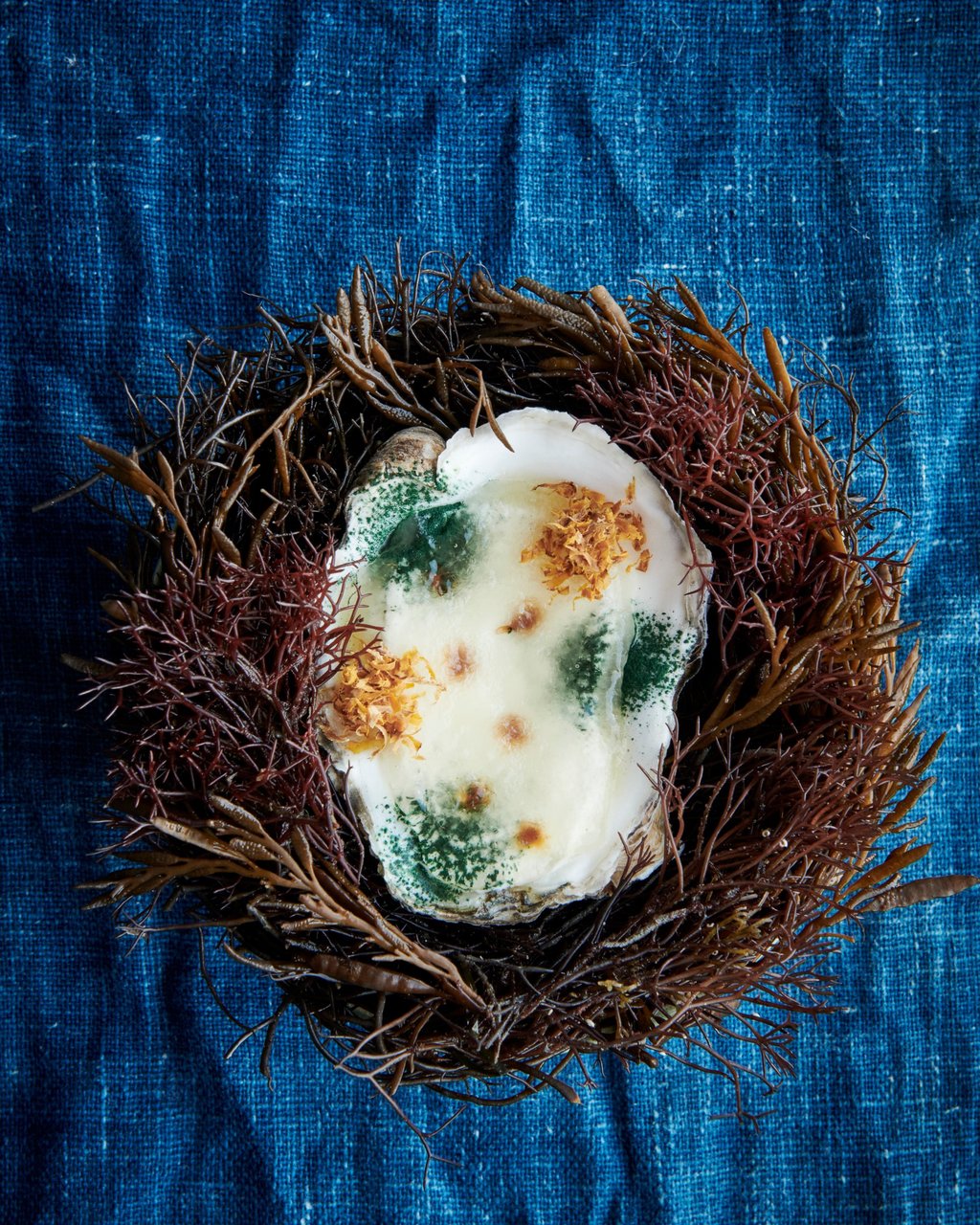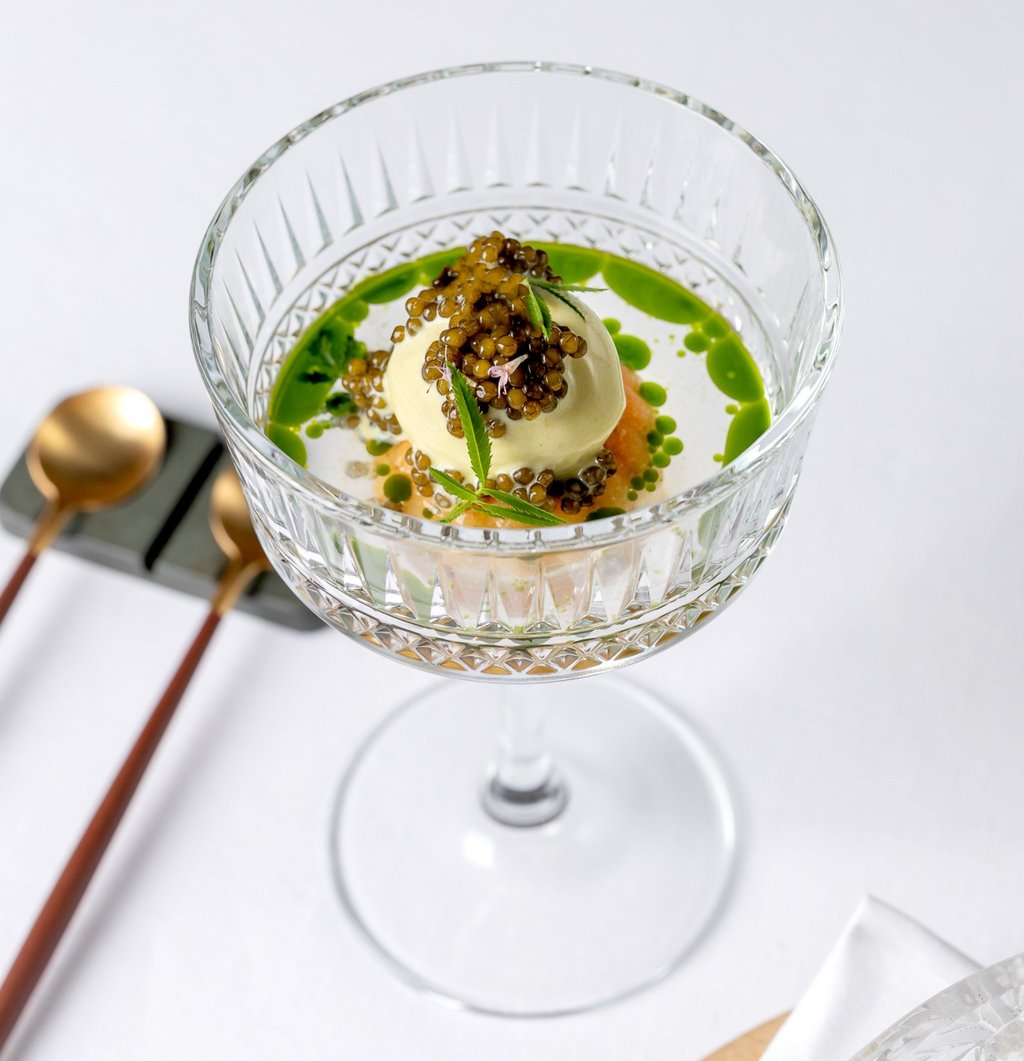Savoury desserts? Fine dining chefs are giving sweet treats a new take, from Michelin-starred Noma in Denmark’s dish with oyster stock, to Sawaan in Thailand’s crab claw-inspired concept

- Desserts don’t have to be sweet: Noma, which does not have a pastry chef, created a dish featuring oyster stock that takes cues from Japanese cuisine’s umami flavours instead
- London’s Da Terra created a baba dessert topped with Kaluga hybrid caviar while Ynyshir’s treacle tart uses A5 Wagyu fat with miso, and Taipei’s Taïrroir has a sweet version of pong pia
There’s a dish at Noma – the Danish eatery currently topping the prestigious World’s 50 Best Restaurants list – that contains oyster stock, spirulina powder, roasted kelp, and fermented and smoked pumpkin. It is served in an oyster shell. But it is not a savoury course.
The flavours of the sea, the smoke and the funk of fermentation are combined with an ice cream made of quince and amazake – a sweet Japanese drink made, like sake, from fermented rice. The dessert also incorporates quince juice and honey.

Junichi Takahashi is head of research and development at Noma – the three-Michelin-starred, Copenhagen-based restaurant does not have a pastry chef. He drew on the umami-focused cuisine of his native Japan to create the dessert – with surprising guests a key element of the recipe.
“I wanted to create a dessert which surpasses the imagination and expectation of the guest,” he says. “Usually when creating dishes, dessert and savoury are kept separate. But we sometimes like to mix the two.”
Noma is not the only restaurant breaking down the sweet/savoury barrier.
At Michelin-starred Saawaan in Bangkok, pastry chef Arisara “Paper” Chongphanitkul serves a signature dessert called chilli crab that includes salt-cured egg yolk powder and a chilli sauce gel. The dessert is shaped to resemble a crab claw, evoking the beloved Singaporean dish, which is very much not a dessert.
Maira Yeo, who was just named Asia’s Best Pastry Chef 2022, also uses fiery capsicum in one of her creations at Singapore’s Cloudstreet, a pre-dessert made with celtuce (a variety of lettuce with a thick stem), yuzu, yogurt and green chilli.

In London, at innovative European restaurant Da Terra, head chef Rafael Cagali tops his baba (itself a trending dessert, with varieties appearing on fine dining menus around the world) with pistachio ice cream and a generous dollop of Kaluga hybrid caviar.
Out west from London, in Wales, two-Michelin-starred Ynyshir uses A5 Wagyu fat with miso in a treacle tart. The Wagyu replaces cream, and adds a savoury note while retaining the creaminess typically expected from the dessert.